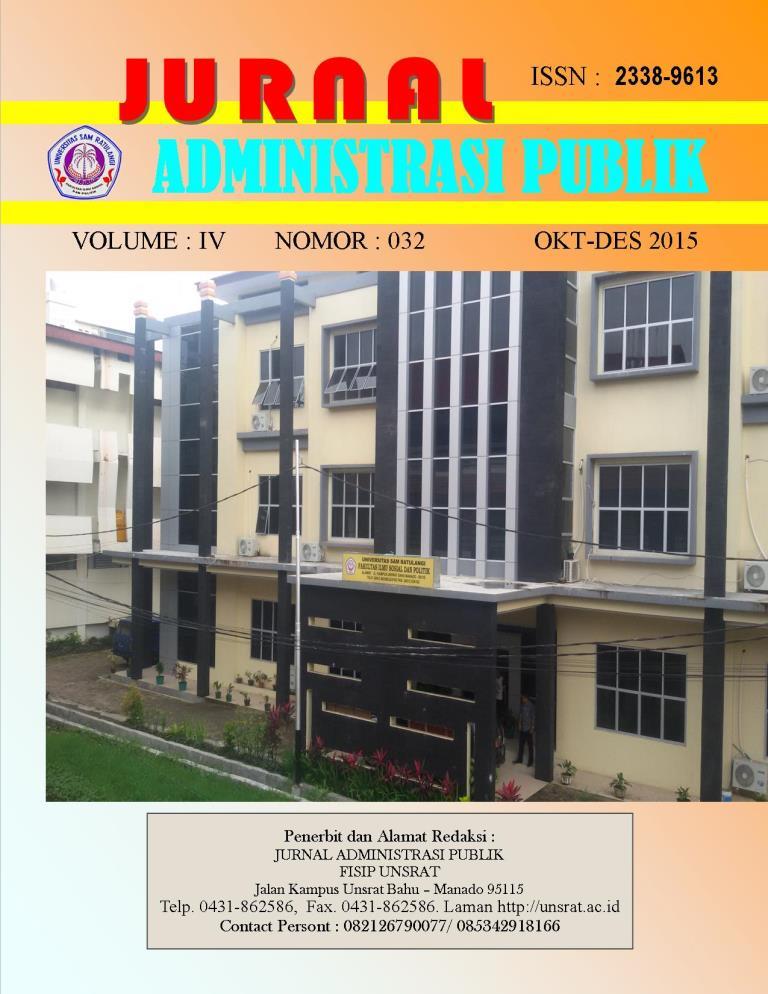PENGARUH GAYA KEPEMIMPINAN CAMAT TERHADAP PRESTASI KERJA PEGAWAI DI KANTOR KECAMATAN MALALAYANG
Abstract
Abstract: This study aims to determine how much influence the leadership style camat on the performanceof employees at the district office. The method used in this research is quantitative method withcorrelation and regression approach. As for the variables in this study are: Leadership Style andPerformance Officer. The sample is part of the population that is representative of the population will betaken. The sample in this study were all Malalayang District Office, the number of 30 people. Thetechniques used to obtain the data in this study were: questionnaires, interviews, observation anddocument study.Regression analysis can be predicted that the achievements of employees will increase or increasesignificantly if the leadership style of a district head further improved, it is certain to be a better employeeperformance or increase significantly. In a simple regression equation, regression coefficient direction (b)of 0.74 is positive which means that if the leadership style increased by one unit, it will be followed by anincrease in employee performance of 0.74 or 74%. Then the value of the constant coefficient (a) is equal to4.86 it means that if there is no change in terms of leadership style Camat then increase employeeperformance is just as big as 4.86 scale.In conclusion Leadership Style at the District Office Malalayang positive and significant impacton the performance of employees, although not entirely work performance of employees affected by theleadership. But an institution / organization, with a much-needed leadership and has a very importantrole on the performance of employees.Key words: Leadership style, PerformanceDownloads
Published
2015-11-05
How to Cite
Supari, K., Rompas, S., & Londa, V. (2015). PENGARUH GAYA KEPEMIMPINAN CAMAT TERHADAP PRESTASI KERJA PEGAWAI DI KANTOR KECAMATAN MALALAYANG. JURNAL ADMINISTRASI PUBLIK, 4(32). Retrieved from https://ejournal.unsrat.ac.id/v3/index.php/JAP/article/view/9937
Issue
Section
artikel








